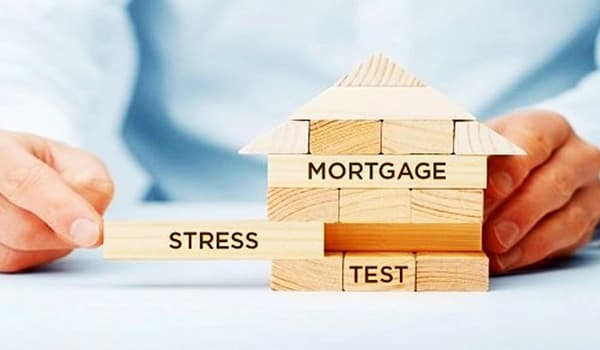Borrowed Down Payment: What It Means and How It Works

If your savings aren’t quite enough to get approved, a borrowed down payment seems like a practical shortcut. But is it really your best option?
This article breaks down everything from the “how it works” to the “pros & cons” and alternative strategies to help you make a smart decision.
What Is a Borrowed Down Payment?
A borrowed down payment is when some or all of the money you use to meet a mortgage down-payment requirement comes from borrowed sources (instead of your own savings). When put against traditional down payments, you’ll notice some key differences between the two, for instance:
- Borrowed funds are equal to additional debt that lenders must verify and include in debt-service ratios.
- Traditional funds don’t create a new repayment obligation and are easier to qualify for.
- Some lenders allow a borrowed down payment mortgage under specific conditions (like higher premiums or stricter underwriting).
If you’re already a homeowner planning for an upgrade or new purchase, check our guide on mortgage renewal tips to learn how timing and terms affect your borrowing power.
How Borrowed Down Payments Work
Can you borrow for a down payment? Yes. Then, you can use it as the down payment at closing. After that, the lender will review the terms and add repayments to your GDS/TDS and credit assessment.
Here are the common sources lenders accept:
- Personal loans: For a personal down payment loan, you must disclose the outstanding balance and the monthly payment. The lender includes this repayment in your total debt service ratio to assess affordability.
- Lines of credit (LOC): You can also use a line of credit, in full or in part. However, any amount borrowed -as well as its required monthly or minimum repayment- will be factored into your debt calculations.
- Family loans (non-gift): This source is generally accepted, too, provided that the arrangement is properly documented, including a signed agreement and proof of funds. The monthly repayment is added to your TDS ratio. With proper documentation, some lenders may even exclude those from debt obligations.
Pros and Cons of Using a Borrowed Down Payment
Borrowed down payment mortgage offers important benefits:
- It paves the way for faster homeownership, so you don’t need to save for years.
- It is flexible and provides multiple funding sources.
- Specialized mortgage/insurance products (Sagen, Flex-95, etc.) to facilitate it as well.
There are a few risks and costs too, for instance:
- It comes with higher overall debt and monthly payments, which raise TDS/GDS and can reduce what you qualify for.
- You’ll have to pay interest on both the loan plus the mortgage itself. This can make homeownership more expensive over time.
- Lenders usually have stricter approval when using borrowed funds. Therefore, you may need a higher credit score and detailed proof of income.
- Some insurers, like Canada Guaranty, apply higher premiums or limit the loan-to-value ratio (LTV) and mortgage amortization
- If the borrowed money comes from an unsecured source, such as a credit card, the interest will be much higher.
Borrowed Down Payment Rules in Canada
These rules come from two layers: national mortgage insurer/regulatory rules and individual lender program rules. National mortgage down payment rules include:
- Homes under $500,000 require a 5% down payment, those between $500,000 and $1.5 million need 5% on the first $500,000 plus 10% on the rest, and homes over $1.5 million require 20%.
- CMHC and other insurers allow borrowing only under defined programs and with lender/insurer approval.
- Higher premiums and stricter qualifying rates often apply for high LTV and borrowed down payments.
- Lenders must include any repayment obligations (from the borrowed funds) in the TDS ratio when qualifying borrowers.
- Income/employment verification and documentation of the fund source remain mandatory.
Other typical lender requirements are:
- Minimum credit score is not always ≥ 600. It’s company-specific and you need to confirm it with the lender.
- Property eligibility and maximum property values vary by insurer and product, too. Some insurers limit secondary or investment property eligibility.
- Many products cap LTV. For example, Flex-95 targets 95% scenarios and Sagen lists 90.01-95% LTV.
Alternatives to Borrowed Down Payments
If you prefer avoiding new high-cost debt and making the mortgage approval process easier, consider these alternatives:
- Save more and plan for a slower purchase. It may not be the best option, but it has lower risk and no added debt.
- See if you can use a gifted down payment from family (documented as a gift); lenders typically don’t treat it like CMHC borrowed down payment or other loans.
- Apply as a co-buyer or non-residing co-borrower. Adding a family member to the title shares qualification and funds, though program rules differ by provider.
- Withdraw funds from your RRSP to use as a down payment. This is a well-structured alternative that most lenders accept.
- Review federal/provincial programs that lower the required down payment or offer rebates. (Make sure you know the difference between refinance vs heloc vs second mortgage)
- Use employer assistance or private down-payment grants. These are also accepted if they come from recognized programs.
FAQ
Can I borrow money for a down payment on a mortgage?
Yes. Canada allows this in many cases, but lenders must approve the source, and the loan repayments count toward your debt ratios.
Do banks allow borrowed down payments?
Some banks do. It depends on the lender, your credit score, and whether the program is supported by a credible mortgage insurer.
How does a borrowed down payment affect mortgage approval?
It can lower how much you qualify for, because lenders include the repayment in your debt load. You may also face higher rates or insurance premiums.
What are the risks of borrowing a down payment?
You’ll carry more debt and pay more in interest. If your credit or income is tight, approval may be harder too.
Final Thoughts: Is a Borrowed Down Payment Right for You?
Borrowing for a down payment can help you buy now instead of later, but it also means more monthly obligations. So be honest about your financial comfort zone, consult with a trusted expert, and weigh options carefully before making your move.
- In this post:
- What Is a Borrowed Down Payment?
- How Borrowed Down Payments Work
- Pros and Cons of Using a Borrowed Down Payment
- Borrowed Down Payment Rules in Canada
- Alternatives to Borrowed Down Payments
- FAQ
- Final Thoughts: Is a Borrowed Down Payment Right for You?



